Welcome to Ceramic Review
Ceramic Review is the magazine for contemporary and historical ceramics, ceramic art and pottery.
Ceramic Review Issue 334
July/August 2025
Ceramic Review is the magazine for contemporary and historical ceramics, ceramic art and pottery.
July/August 2025
A strong connection to the landscape of where she grew up in Poland and a fascination with the figurative form has shaped Aneta Regel’s abstract sculptures. Andre Hess tells us more.
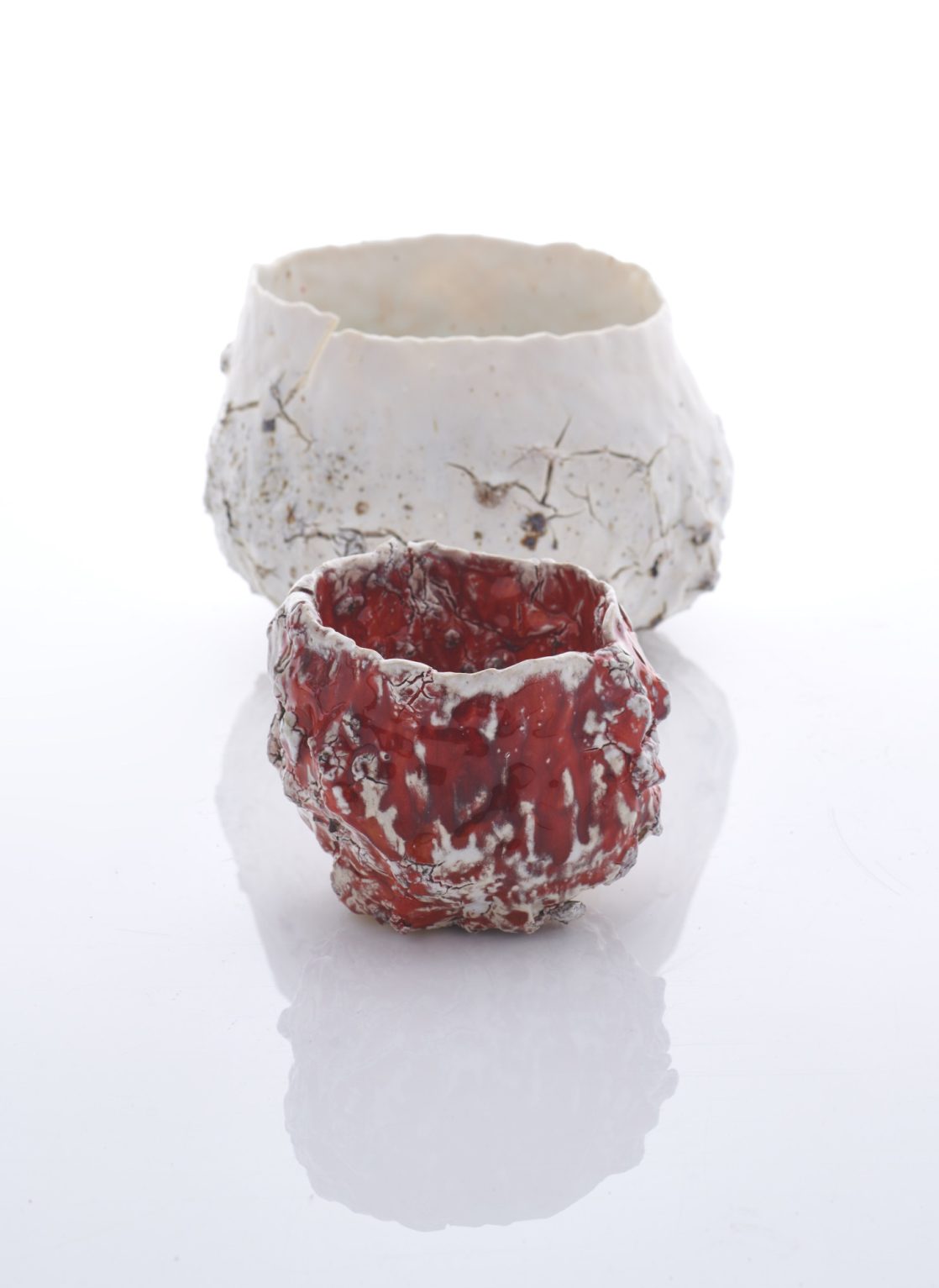
Raining Stone, 2023
Aneta Regel has recently exhibited at Art Genève 2023, represented by Taste Contemporary, a fine art gallery based in Geneva. She is also working towards her first solo exhibition in London, at the Sarah Myerscough Gallery in its new quarters in Mayfair. She is deeply proud of this solo show and feels humbled to be asked. A particularly proud time for her was realising that her sculptures formed part of the Shapes From Out of Nowhere: Ceramics from the Robert A. Ellison Jr. Collection at The Metropolitan Museum of Art in New York (The Met) in 2021. This came out of her association with the Jason Jaques Gallery, New York.
The catalogue for the exhibition explained the ceramics featured as those that: ‘… explore the featured artists’ rejection of symmetrical, utilitarian forms in clay in favour of the sculptural and the abstract, and challenges the boundaries between function, design, drawing, painting, sculpture and architecture…’
Of course, The Met didn’t really mean that this kind of work comes from out of nowhere, but possibly that it is not referential. Regel’s work does not come out of nowhere, just as everything made by humankind, whether craft or otherwise, good or bad, does not come out of nowhere, but always has a sociopolitical and personal context. There is a reason something looks the way it does.
CREATIVE CALLING
Regel’s parents were keen on her becoming a pianist (she quickly, and unprompted, asserted that the abstraction in her work shares common ground with music), but at 15 she rebelled and demanded that they allow her to go to art school. That, together with what happened after, would register in her adulthood as her epiphany. What cannot be overstated, however, is that this epiphany is inseparable from time and place.
Born in Silesia in 1976, from the age of 15 to 20 Regel attended the Gdynia Orlowo Liceum Plastyczne, a secondary school where the emphasis was on art. From 1996 to 2000 she studied at the ASP Fine Art Academy in Gdansk in the faculty of sculpture. What these facts do not reveal is that both institutions were difficult to win places at, and once there, it got more difficult. Anatomy, art history, drawing and architecture were all taught to a very high level. And there was much consideration given to conceptual art, installation and multimedia. Both places were well-founded and old.
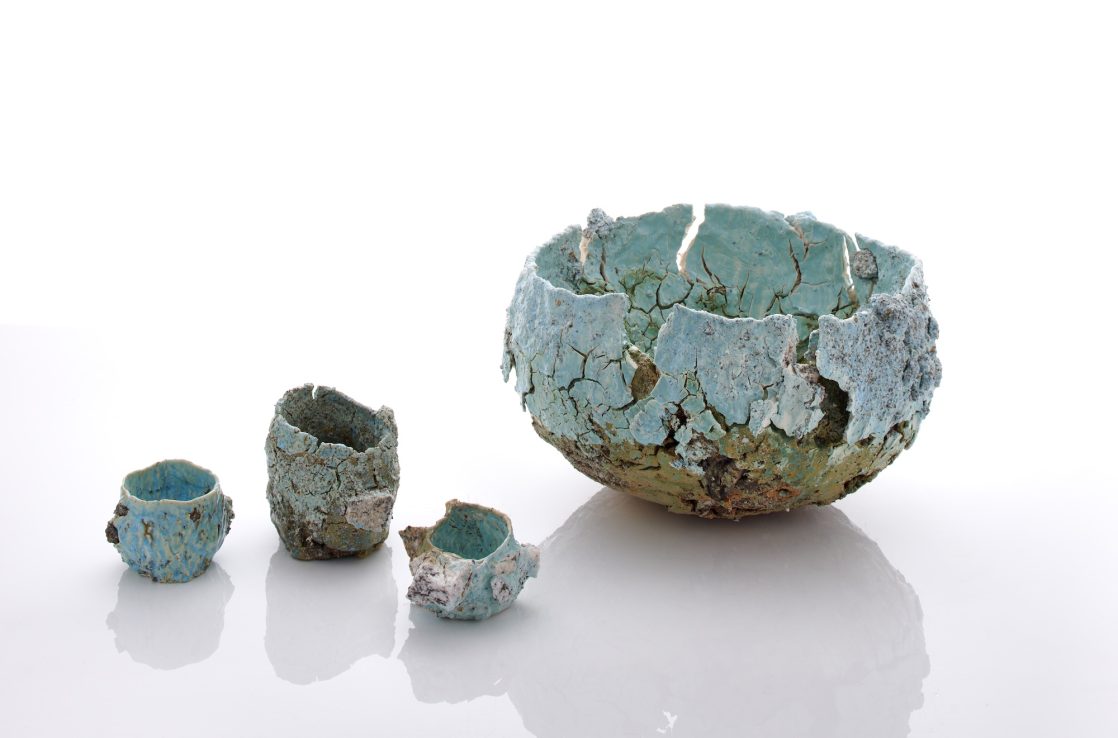
Raining Stone, 2022
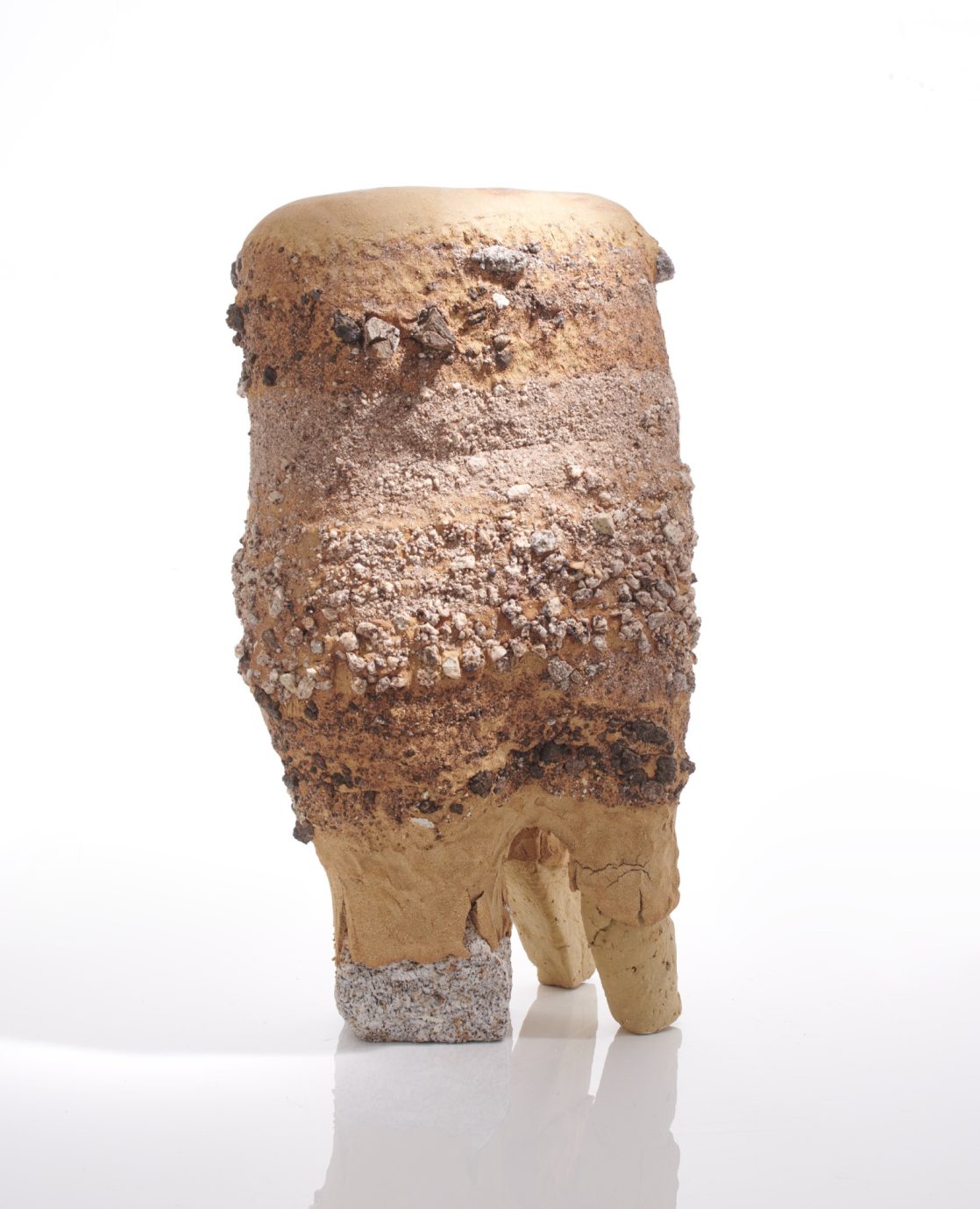
Gneiss, 2023
Also, what the facts do not reveal is that the students were given large workspaces, as much material as they needed and studio time. Even if the students wanted to work on a large scale, they were fully funded, and they had creative freedom. They received living expenses. The tutors had studio spaces and were available almost all of the time. Regel fondly remembers her sculptor tutor, Irene Zabrocka, who introduced her to clay. The tutors were bohemian and interesting and possibly had clear memories and knowledge of Communism and Soviet Socialist Realism. Could it be that their means and methods, and their attitude to the conventions of art, came as a reaction to this?
A number of Polish artists inspired Regel growing up, such as textile-based sculptor Magdalena Abakanowicz, who has a major exhibition of her work at the Tate Modern until May 2023, and the sculptor Alina Szapocznikow (1926–1973), an artist whose work moves Regel deeply. Szapocznikow’s work, too, hovers between abstraction and figuration, the figure as a platform for the absurd: exaggeration, distortion, monstrousness, the uncanny, illness, body parts, etc. The kind of work that is made when naturalism and verisimilitude are no longer adequate, and for which there is long sociopolitical history.
NATURAL CONNECTION
Regel has eyes that twinkle and scan the horizon, perhaps a tic that goes back to staring out to sea waiting for her father who captained a trawler, rescuing and moving ships that operated out of Gdynia. The family lived not far from the port and the sea in a tall apartment block inside a primal wood. Picture this: an apartment block in the middle of a forest, children roaming freely, riding horses (forests cover an estimated 35% of Poland’s territory, and are mostly owned by the state. Notably, they are increasing at a rate so fast that by 2035, Poland’s forest-coverage percentage will be more than 40%).
As a child, Regel, almost feral, spent her time with tree bark against her skin, pine needles prickling her arms, deciduous leaves cool against her face, and in their apartment a variety of animals. She navigated the world through its textures, colours and weight, sampling nature through her hands, arms and legs. For Regel, landscape has an emotional and a phenomenological quality. The feel of these things on her body. She goes back to Poland regularly to renew her connection to its landscapes and its forests. She is also thinking of bringing back some of her old work, which she now sees anew, but with more subtle colours.
Technique and technicalities are of no interest to Regel. She is a sculptor who has been seduced by clay and sometimes the vessel shape. The ideas matter more and come first. Her pieces are often head-size and torso-size. She builds by hand using a variety of clays (big chunks of them) of different colours (including the white of porcelain) all fireable to stoneware temperatures, often together in one piece, incorporating found materials, usually igneous rock. She is interested in showing inclusions and additions and taking the work to the extreme. Regel finds these additions on building sites in London, from manufacturers of kitchen worktops, and roadworks where cobbles might be. She uses slips and simple glazes, usually commercially available. She fires pieces multiple times, allowing the kiln itself to be creative. She will join unfired clay to fired clay, trusting that by firing really slowly they will fuse by the hand of the kiln.
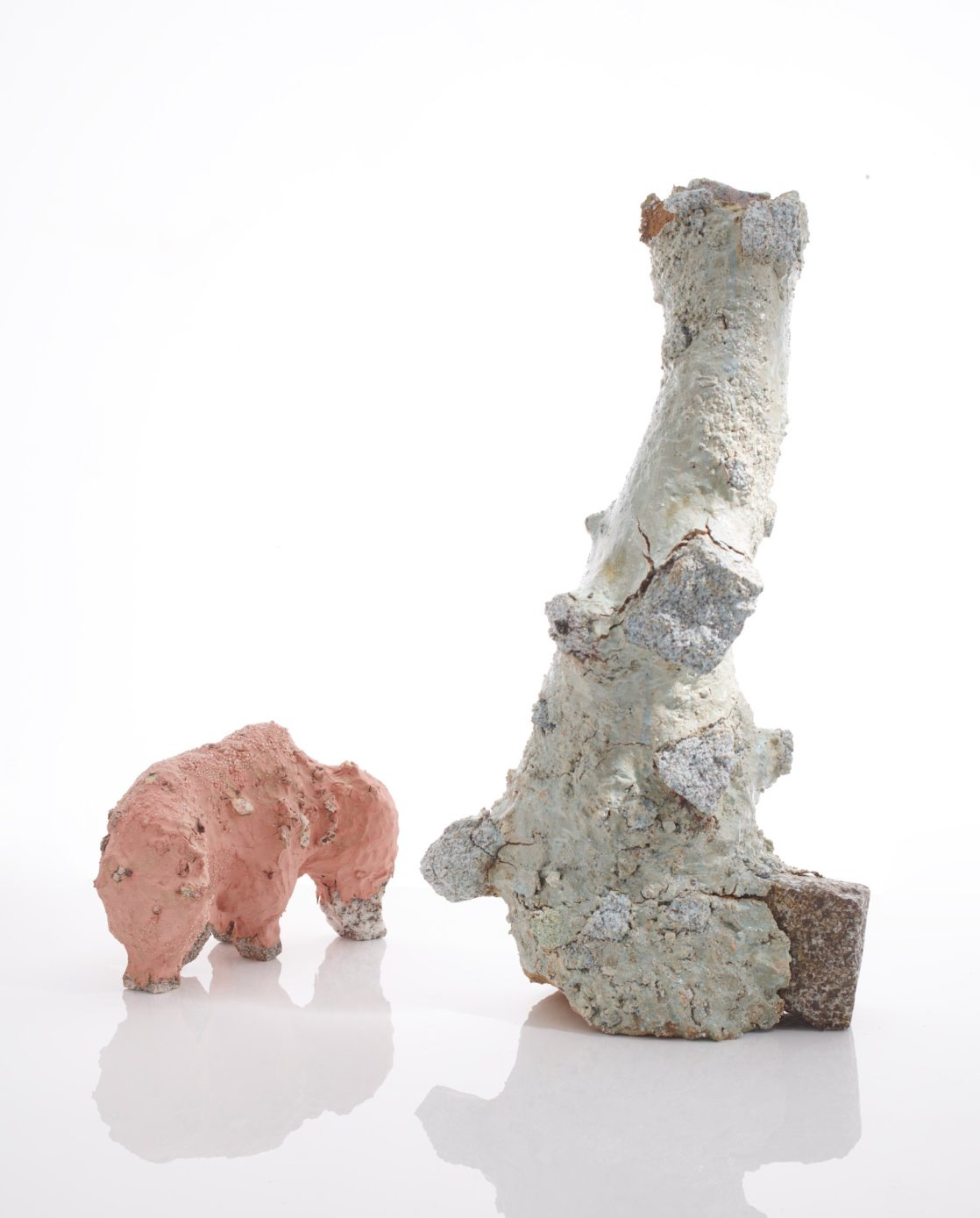
Volcanic Totem 6 Pien, 2023 with Do gury nogami
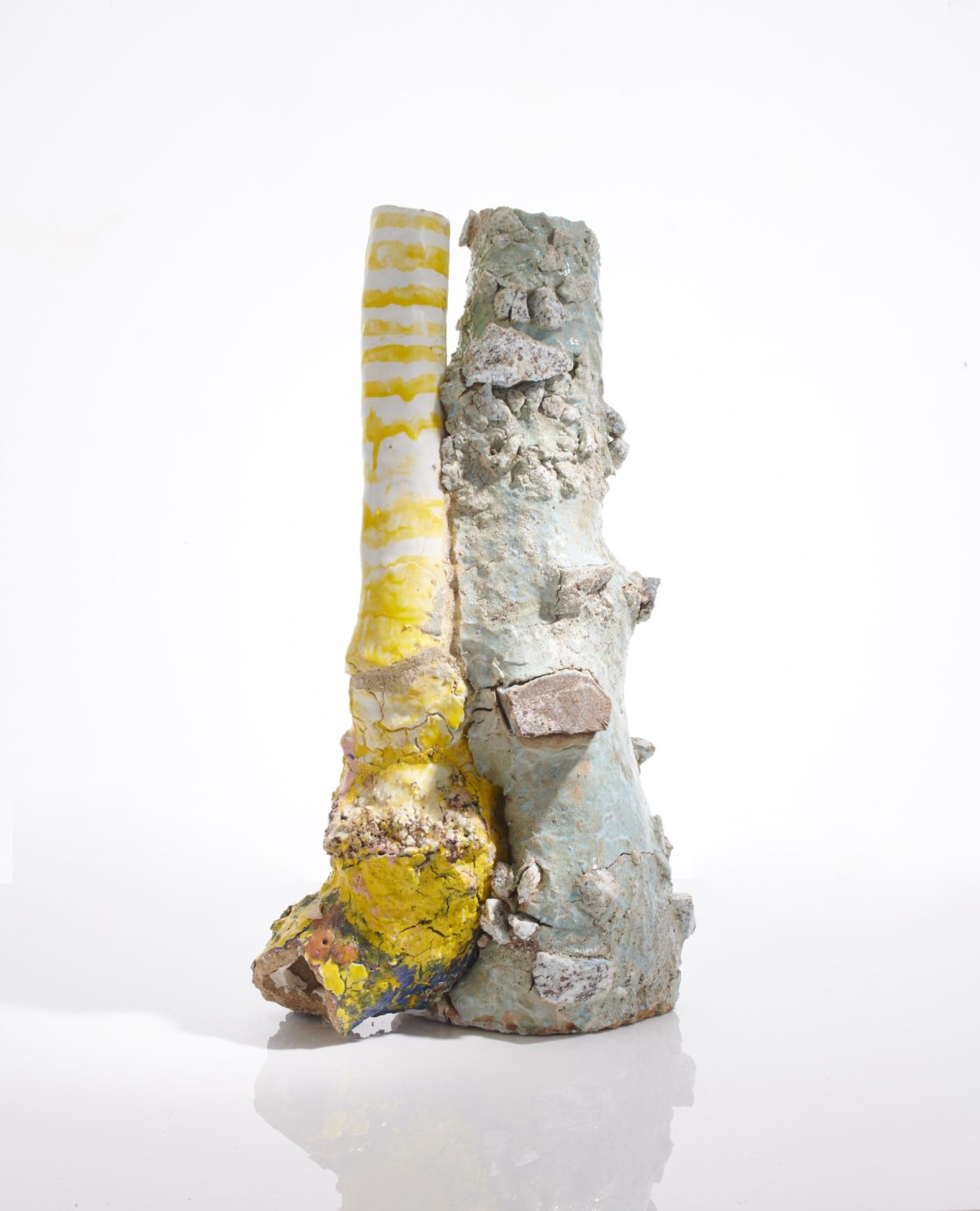
Duet, 2023
She named Phyllida Barlow as an influence and that she feels close to the way she works, its materials, its clarity and its relation to music, and that Barlow’s kindness, generosity and humility also comes to mind. She mentioned Anselm Kiefer, for the same reasons, but also for his critique of history; Alina Szapocznikow, and how her work relates to the body; Ewen Henderson for his attitude to clay and its received rules; and Claudi Casanovas for the release from the convention that clay vessels needed to be thin walled.
Other ceramicists walk on by, tut-tutting at Regel’s work, or they are intrigued. Many resort to asking technical questions, perhaps a way of finding a way into the work. Many have questions about whether it qualifies as beautiful. It took her years not to feel affected by the rejection.
EXUDING LIFE
At this point it is crucial to note that Regel joined the Harrow Course at the University of Westminster, which, for several interesting reasons, is no longer with us. There she completed the whole curriculum, including throwing, glaze-making and wood-firing (she still loves wood-fired work). What stayed with her was clay as a thing in itself, and how, when fired, it is fixed into a monolith that is permanent but capable of exuding life. This she carried through to her MFA at the Royal College of Art, where Emmanuel Cooper was her hero, and where I first encountered her work. Still in my mind’s eye is the sight of a thigh-high sculpture on the floor, heavy, red and glowing, asserting itself unambiguously.
To Regel, a work is successful when it has mystery about it, when it has life. When it is as fresh at the end as it was at the beginning. A work is successful when it thrills her as she opens the kiln. She does not seek approval elsewhere.
Her main challenge at the beginning of her career was to survive and remain honest to her work. There was no business training. She is not good at promoting herself and networking and hopes her work speaks for itself. She no longer finds creative blocks challenging, but sees them, and life, as part of the process. They used to be ‘lows’, but no longer. She finds it particularly exhilarating when the work moves out of familiar territory and forward. A recent highpoint is seeing her old work, made in Poland, anew.
Regel wants us to understand that the idea does not desire to become a clay object, and that clay was a choice made by her. It was a pure artistic choice and a particular endeavour. Recently her colours have become more delicate, closer to her current emotions, but still in visual tension with the shapes. She makes fragments and moments of the place she grew up in: a happy family in an apartment block in the middle of a forested landscape, a short distance from the sea.
Silence is the appropriate attitude with which to view her work, and time is required. Her work locates itself somewhere between allusion and a resemblance to things and refuses to mimic what is already in the world. It intrudes quietly, its maker out of view.
For more details visit anetaregel.com; @anetaregel; Memory Landscape, 28 April–17 June, Sarah Myerscough Gallery, sarahmyerscough.com
All images © Sylvain Deleu
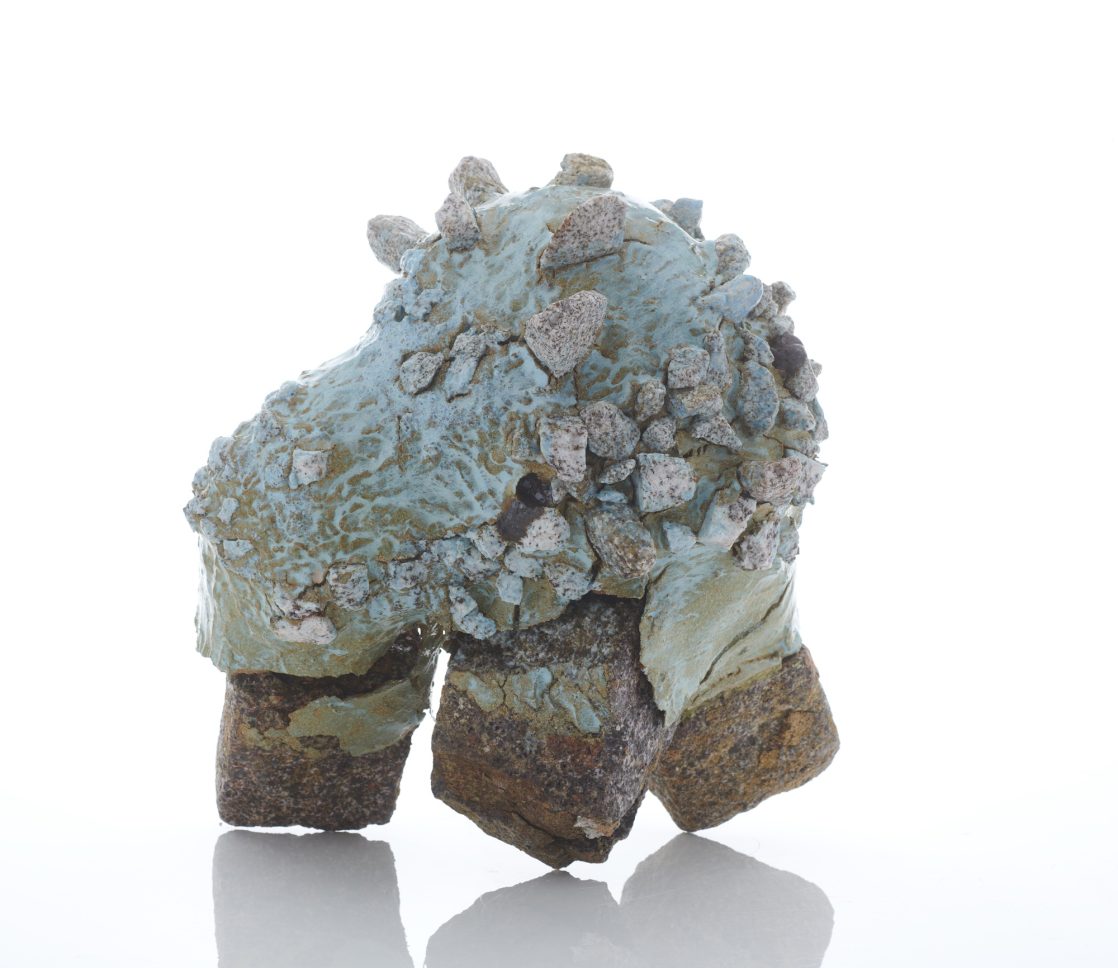
Erratic, 2023